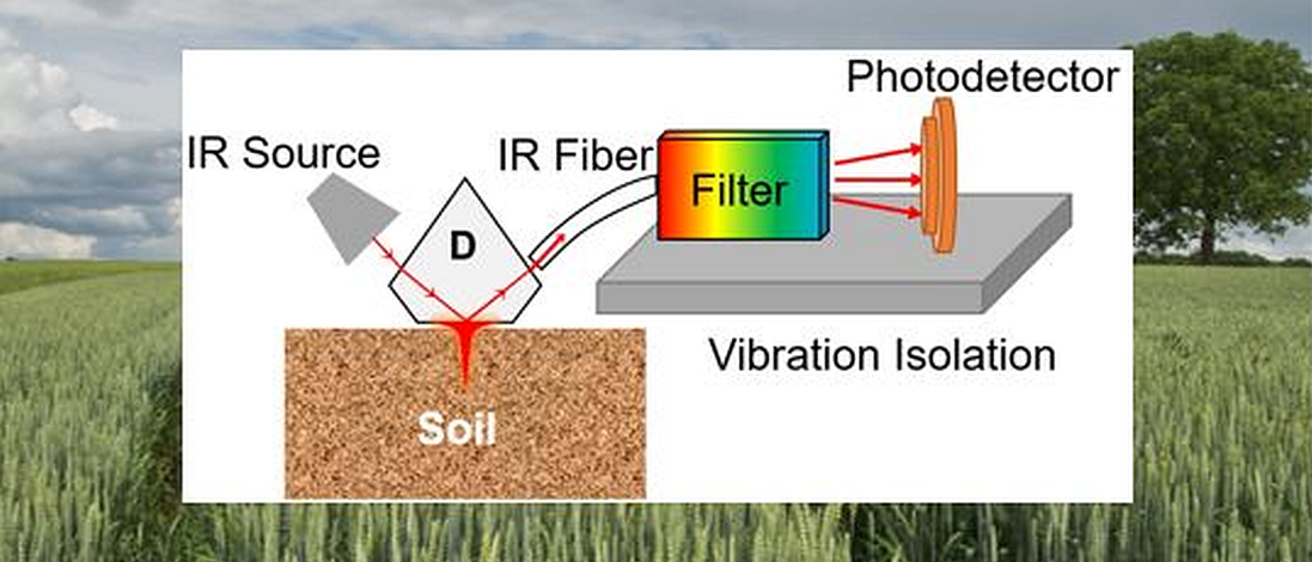University of Iowa scientists are part of a team investigating an infrared sensor configuration that can help farmers more efficiently apply crop fertilizer.
Infrared sensors have been used to analyze and adjust soil nitrate application rates, but the most common sensors are not suitable for real-time measurements because they are sensitive to severe vibrations created as tractors drive across rough agricultural fields.
“Inefficient use of nitrogen fertilizer by crops is both a major economic problem for farmers and a serious environmental problem for society,” said Fatima Toor, an Iowa Technology Institute faculty affiliate and UI associate professor of electrical and computer engineering. “Less than 50% of synthetic nitrogen fertilizer that is applied to crops, such as corn, is actually taken up and used by the crops.”

Toor, who holds the Lowell G. Battershell Endowed Chair in Laser Engineering, is part of a research team proposing a new infrared sensor configuration that can cut costs for farmers and promote cleaner water ways in the surrounding area as fertilizer is more efficiently applied. Toor is also the co-founder and vice president at Firefly Photonics LLC, a UI startup commercializing infrared technologies.
After studying sensor configurations based on different infrared light sources including quantum cascade lasers (QCLs), thermal sources, superluminescent diodes (SLDs), and superlattice light emitting diodes (SLEDs), the team proposed design options that are rugged in the field. The options are less sensitive to vibrations and collect data at fast rates with a high signal-to-noise ratio, a measurement that compares the level of a desired signal to the level of background noise.
The research is presented in a recently published manuscript in the Institute of Electrical and Electronics Engineers Sensors Journal.
“In this publication we provide a rigorous design evaluation for tractor-mounted mobile infrared sensors that include only one moving component, the variable grating or variable filter, making their design robust against vibrations such as those that tractors experience while moving through the uneven terrain of an agricultural field,” Toor said.
The group of researchers were made aware of the problem by David Laird, professor of agronomy and environmental science at Iowa State University and the founder of N-Sense, LLC, a startup company which is developing field-deployable sensors for efficient nitrate-based fertilizer use.
Laird and Toor are among five authors on the paper. Others include Bingtao Gao, a UI PhD candidate in electrical and computer engineering and graduate research assistant at the Toor Lab; John P. Prineas, a UI professor of physics and astronomy and co-founder and president at Firefly Photonics; and Alexander C. Walhof, an engineer at Firefly Photonics.
